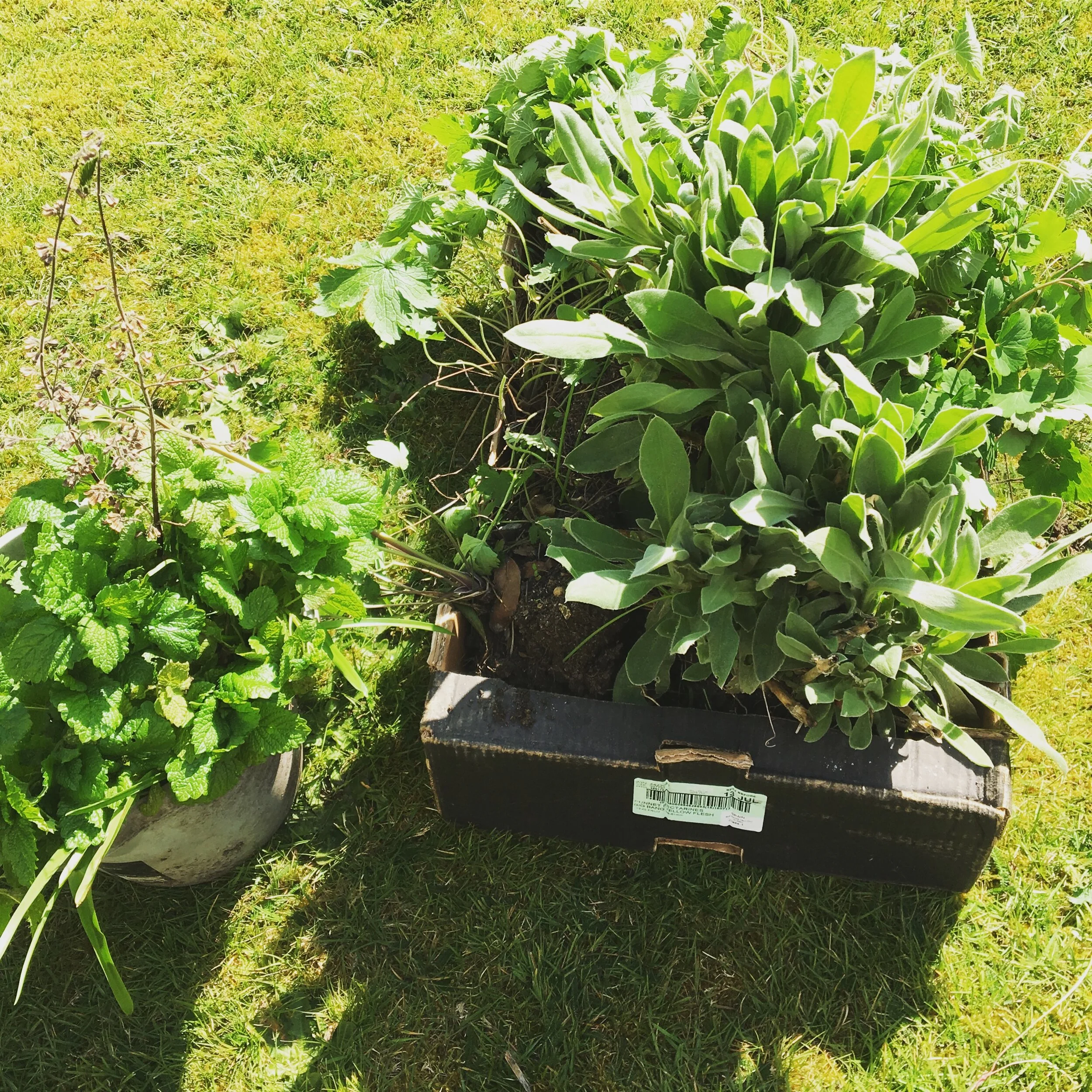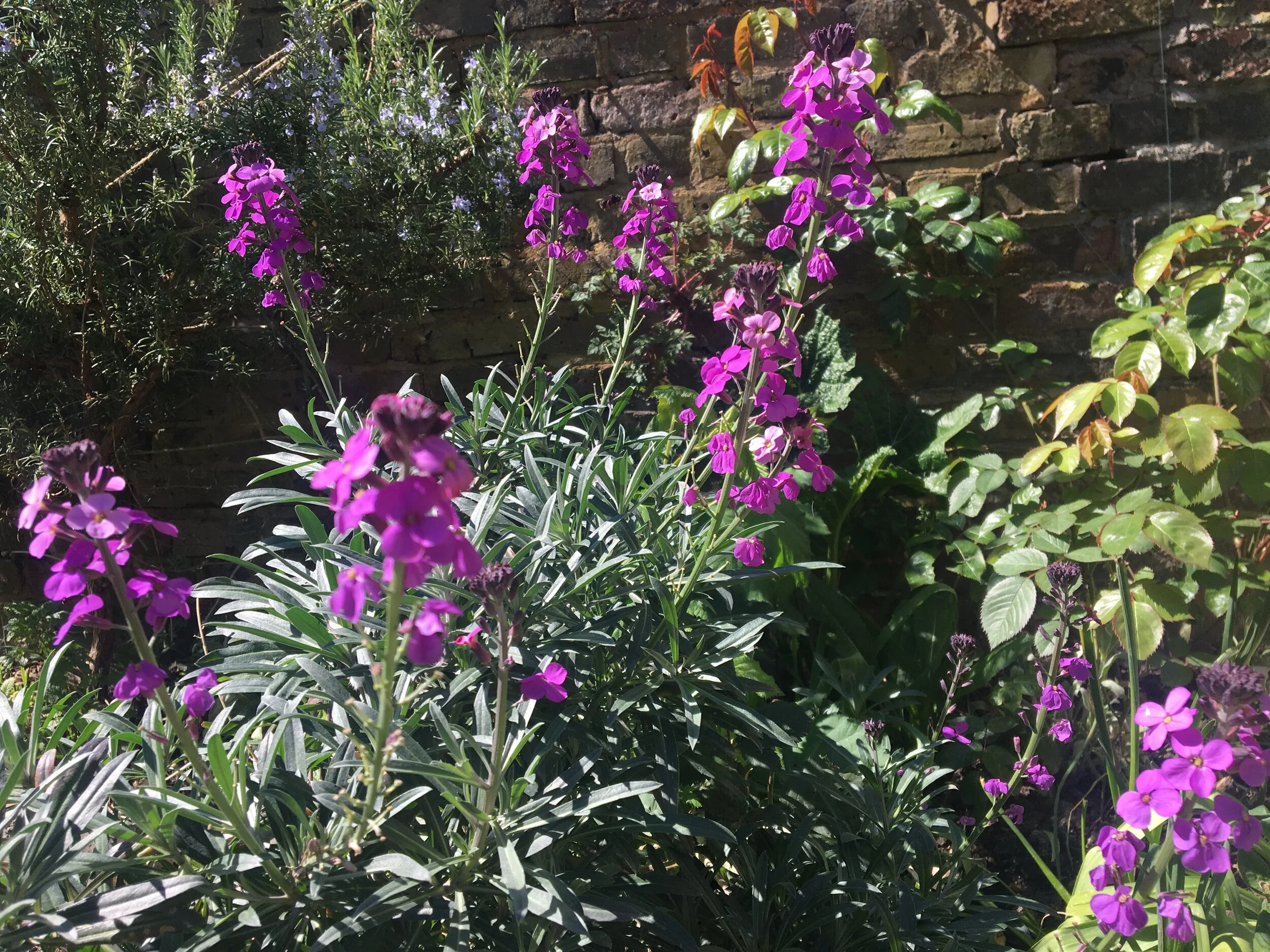Lockdown 2020 - Divide and Conquer
The week before ‘Lockdown 2020’ began, where other people were stocking up on loo paper I was filling my car with horse manure and wildly grabbing trays of summer bedding plants from the local nursery. And I wasn’t alone. I found myself queuing for the usually quiet car park and diving for the last pack of kale seeds, pipped to the post by a wild-eyed man in moccasins and a gilet. It was clear that all the good burghers of Wandsworth and Clapham were planning ahead for a summer of social isolation in the garden with a gin and tonic. Once garden centres closed down, online sellers were inundated with orders and many have either run out of stock or are suspending ordering as they struggle to fulfil a massive surge in demand whilst maintaining social distancing for staff. Those of us lucky enough to have gardens all suddenly have time to spend in them, but seemingly no way to get hold of plants to put in them. It’s still worth trying to find plants online as some suppliers are delivering, but given long delivery lag times there are other ways to fill up the garden and best of all they are pretty much free and hugely satisfying.
We can make a virtue of necessity and view this summer as a brilliant opportunity to revive the tradition of the cottage garden. Cottagers had very little space and no money, relying on the exchange of free plants to fill their gardens. There was a strong culture of passing on seedlings, cuttings and divisions to allow people to fill their gardens and expand their collections for free, with the added benefit that the plants that you grew would be tried and tested varieties that you knew flourished in the garden next door.
For beginner gardeners, the idea of dividing a plant might seem daunting, but it’s actually pretty easy, and arguably you will have better success with something that has been thriving in your neighbour’s garden than you will with a delicate plant from a garden centre. The plants we buy have often lead a pampered life of exotic celebrity. Forced into bloom early and dolled up to entice us, we knock them out of their pots without any effort to understand or get to know them. They find themselves plonked in the cold ground and promptly sulk at best or give up completely.
Dividing plants is also completely free. Planting only one of each plant in a garden looks pretty awful, but repeat planting (with the same plant throughout a border) is very expensive to achieve when each pot costs £9. Divide an existing clump and you can easily have 5 or so plants to fill a garden. The other great benefit of not spending a fortune on your plants is that a beginner can hack away like a mad scientist with the wild abandon that comes from knowing you have nothing lose. So, with hearts emboldened, I suggest we all go bravely into the garden and have a look for plants we can increase in this way.
After half and hour of hacking
The first place to have a look is your own garden. More experienced gardeners will probably already have an idea of what is well established and ready to divide, but beginner gardeners may be pleasantly surprised. Remember that year you moved in, spent £200 on plants from the garden centre, had a fabulous looking garden for 3 months and then never touched it again? Hack your way through the weeds and you may just find them still there, 3 years bigger and just beginning to put on their spring growth.
Anemone japonica often ends up spreading everywhere
The next place to look is over the fence. Friends and neighbours with well-established gardens will probably have big clumps of certain things that they are more than happy to give away. The Japanese anemone in the front garden that keeps on spreading. Too much Phlox. I should add at this point that you obviously need to follow social distancing rules doing this at the moment so let them dig plants up for you or ask them to mark your victims (a length of ribbon adds a sense of poetry and drama) before they watch through the window as you make your approach with a spade.
In general the plants you are looking for are herbaceous perennials (i.e. not a shrub, tree or a seedling) with a good crown (i.e. several vigorous shoots or a mass of green in a clump rather than one single stem). If in doubt, leave it until you know what it is this summer and then dig it up and divide it in the autumn. As a rule it always pays to err on the side of caution and have fewer divisions of a healthy size until you are confident in what you are up to.
There are 2 methods of dividing, both well documented online but here is a brief summary:
1. Sudden death with a spade
This is often the preferred method of experienced gardeners, especially with woodier crowns like a hosta. On a ‘how to’ video you see someone calmly place a sharpened spade effectively between the eyes of their trembling victim and then stamp, splitting the plant cleanly in two. I have been keenly practicing this technique for some time, but personally I struggle with it. For one, there seems to be an art to stamping with surgical precision and I haven’t mastered it. Also, I tend to panic just before the blade comes down and this has the disastrous effect of bluntly shaving much of the plant off. Don’t panic! It is almost impossible to end up with fewer plants than you started with. At worst, you end up with a slightly smaller plant and a richer understanding of the process for next time.
2. Butchery with a bread knife
My preferred method, this has the precision of the spade but you can take things at your own pace and stop halfway for a shot of Dutch courage. After you have dug up your plant, take a moment to have a look at the way it grows. If it is quite leafy or floppy it might help to give it a haircut so you can see what’s going on. If you feel about you will probably find a couple of obvious places where the plant falls into sections with a bit of bare soil between. At this point, either use your thumbs and fingers to gently tease the roots and crown apart or, if you meet with resistance, use the bread knife to cut through the roots and crown until you have two pieces. Repeat this where necessary and where obvious divisions present themselves.
Lychnis coronaria clump before divison…
… and after
Replant your divisions quickly when you have finished as they won’t like being left to dry out. Some plants with more top-growth will also benefit from a good haircut (to about 10cm) so that roots have time to establish without the pressure of sustaining foliage. This looks brutal and feels like you are adding insult to injury, but it will honestly do them good. Finally, give them a really good water which will wash soil back in around the roots and prevent them from drying out. With a following wind, many perennials will have a new lease of life from this treatment and set off into the year with renewed vigour.
At a point where we are forced to stay at home and public parks are threatening to close, those of us with gardens have never been so aware of the great privilege and luxury that they afford us. If we don’t get out into the garden now, when will we? The closure of garden centres is a real loss (and a great tragedy for the industry), but it is no excuse for staying indoors!






